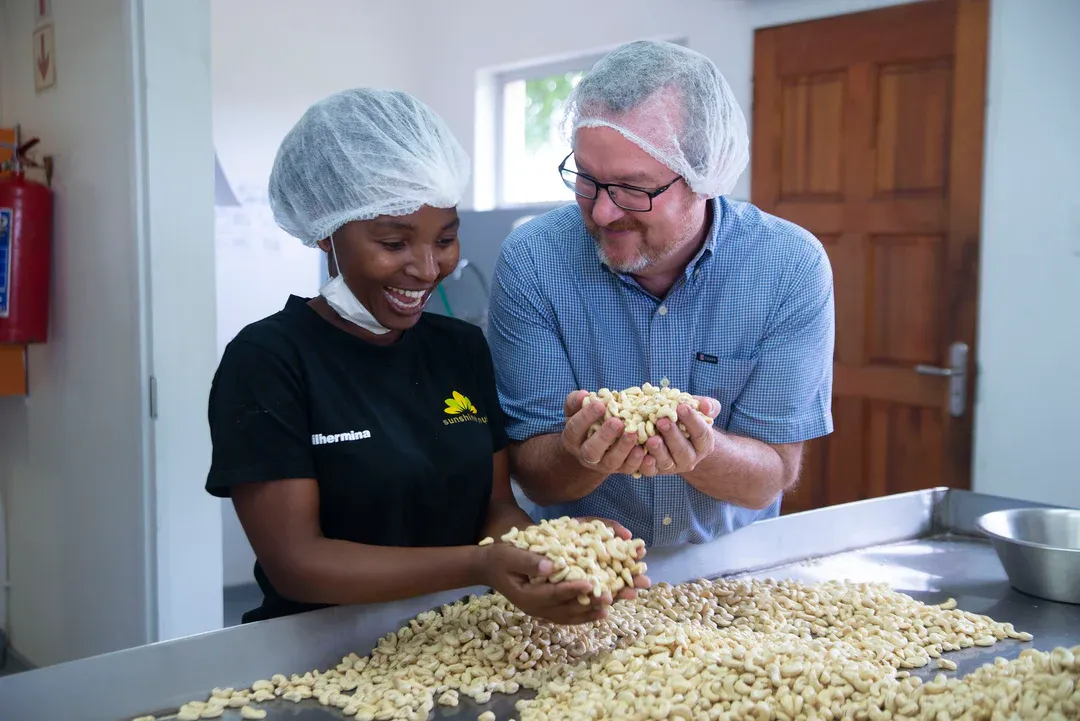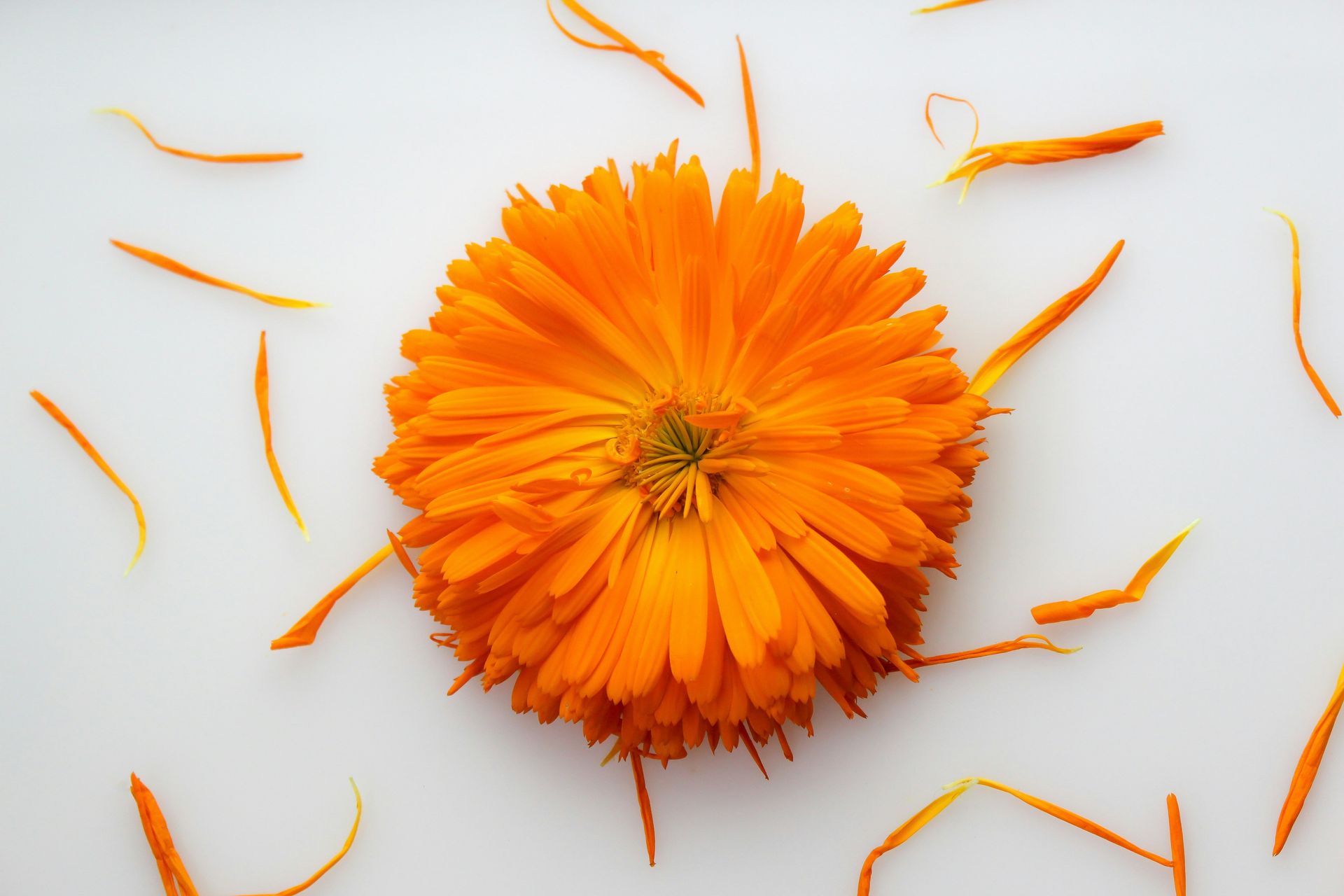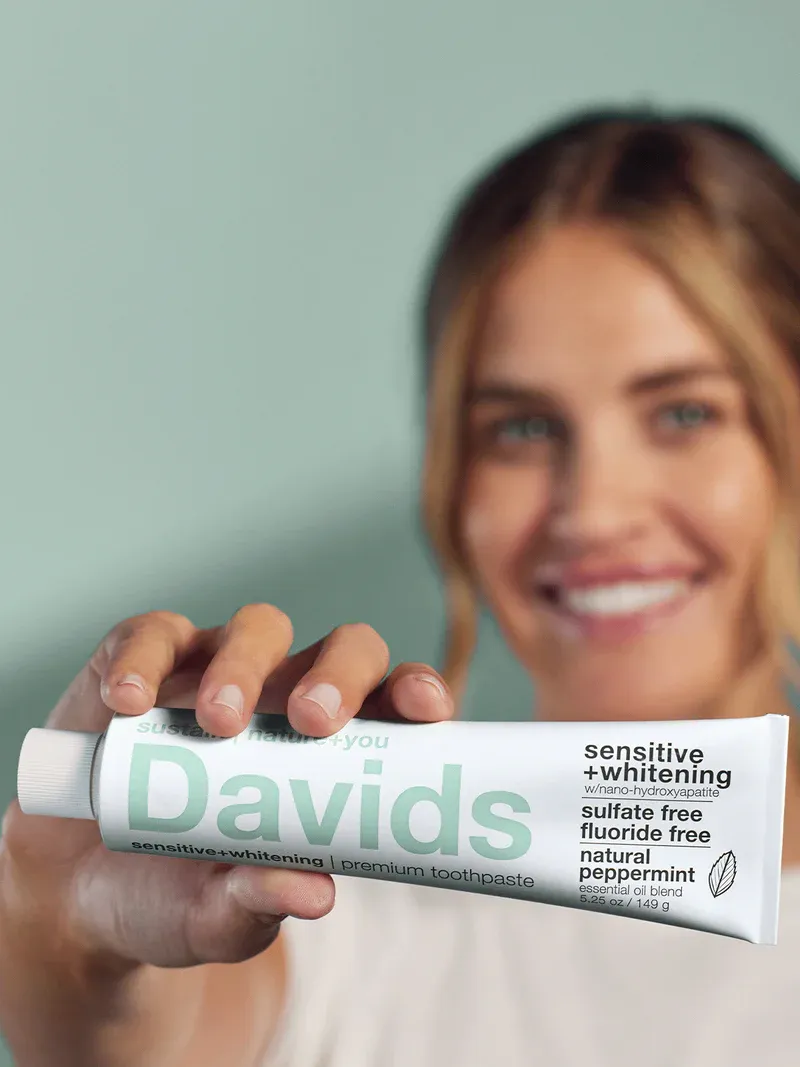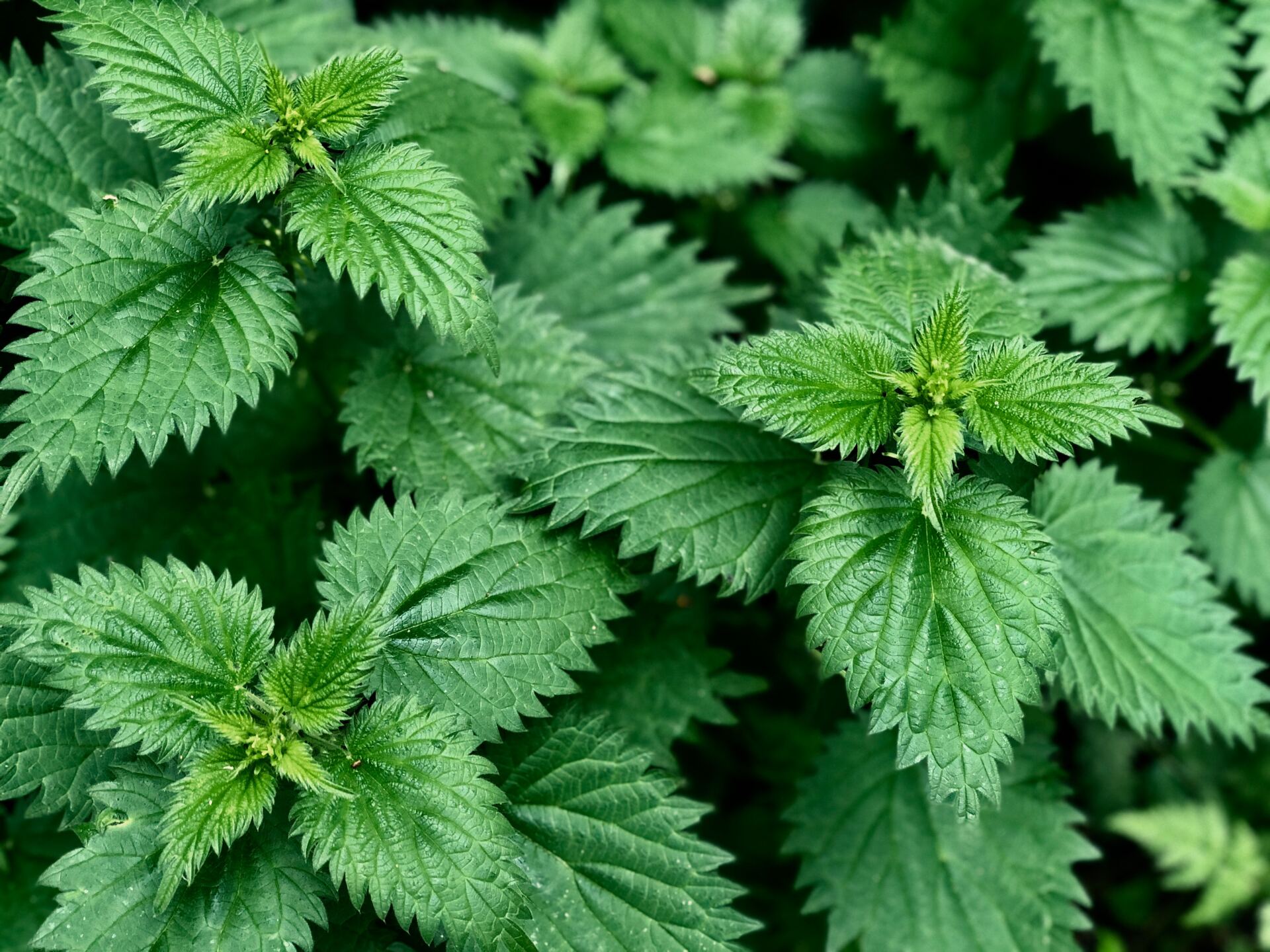
Don Larson's path to founding Sunshine Nut Company was marked by a deep sense of purpose and a desire to make a tangible difference in the world. With a successful 25-year career in the corporate food industry, including a stint as Director of Cocoa Operations at Hershey, Don had ample experience navigating the complexities of the food business. However, it was his encounters with extreme poverty during his travels to developing nations that stirred something profound within him. Driven by a calling to address the root causes of poverty and empower vulnerable communities, Don embarked on a spiritual journey in 2007 to seek clarity on his life's purpose. It was during this period of introspection that he received a clear directive: "Go and build food factories in developing nations to bring lasting economic transformation." Inspired by this revelation, Don developed the Sunshine Approach business model, centered on holistic community development and economic empowerment. In 2011, Don and his family made a bold move, relocating to Mozambique to establish Sunshine Nut Co. Their mission was twofold: to produce premium cashew nuts and to uplift the local community. Mozambique, with its abundant cashew resources and resilient spirit, provided the ideal backdrop for their endeavors.

Bodyceuticals started over 20 years ago on a beautiful Snoqualmie Valley farm owned by the Saffle family. This region of Western Washington is part of the Cascade mountain range, and it is a remnant of an oceanic plate volcano. The resulting mineral rich, fertile soil made it an ideal place for the Saffles to farm their beloved nutrient-dense calendula flowers. Bodyceuticals is now proudly owned and operated by the Herrera family in Santa Maria, California. The family carries on the tradition of high-quality Calendula skincare, still sourcing from only USDA Certified Organic Farms and certified Bee Friendly gardens. The Herreras also proudly work alongside the original founder and uphold high standards for their family, their community and the greater environment.

Davids is high performing natural oral care, that works. Our high-performance formulas use naturally sourced & derived ingredients to effectively whiten teeth, fight plaque, & freshen breath. Whitening Davids uses premium micro abrasives made from natural sandstone and quartz powder to polish the surface stains from teeth and naturally whiten without the use of chemicals. More importantly, these micro abrasives safely polish away the plaque on teeth. You know that feeling of smooth plaque free teeth after going to the dentist for a cleaning…. this is the feeling you get each time when brushing with Davids! The number one thing that causes cavities is plaque, Davids is formulated to be an antiplaque toothpaste. In order to effectively remove plaque, there needs to be a certain level of abrasiveness.... not too abrasive, and not under abrasive. The American Dental Association (ADA) has developed a rating system where they recommend that toothpaste not have an RDA rating above 200 to be safe for the teeth. Any toothpaste under 200 is generally considered safe for daily brushing and not overly abrasive. Davids is in the range of 100 RDA, so is in the sweet spot of being safe for your teeth, but abrasive enough to remove the plaque. Enamel Health Davids sensitive+Whitening toothpaste is the best nano-hydroxyapatite toothpaste to repair sensitive teeth and remineralize enamel. Hydroxyapatite is a natural mineral that makes up 97% of tooth enamel. Nano-hydroxyapatite has been added to Davids toothpaste to repair the tubules and block the passageways to the nerves. Nano-hydroxyapatite was first developed by NASA to help repair and strengthen the teeth of astronauts returning from zero-gravity environments, and we are proud to make this same modern science available in our Davids Sensitive+Whitening Nano-Hydroxyapatite toothpaste. This high-performance, fluoride free toothpaste takes a revolutionary approach to relieving sensitive teeth. With its unique ability to bind to enamel and smooth out micro-imperfections, nano-hydroxyapatite actively works to repair the enamel and block the nerve passageways to relieve tooth sensitivity. With all the benefits of the original Davids Natural Toothpaste, plus the regenerative and remineralizing powers of nano-hydroxyapatite, regular brushing with Davids Sensitive+Whitening Nano-Hydroxyapatite toothpaste leaves your mouth feeling relieved from pain, enamel smooth and restored, and teeth naturally white and clean.

There has been much talk about resilience over the last few years. Resilience can be defined briefly as: ‘capable of withstanding shock without permanent deformation or rupture’ or ‘tending to recover from or adjust easily to misfortune or change’. I am mindful that many people, cultures and societies have faced the challenge of being resilient under conditions more dire than ours. These historical challenges may have also lasted for much longer periods of time and may have been even more consequential to their lives. Wars, famine, violence, poverty, imprisonment, abuse, neglect, hatred and prejudice all inflict a toll. Depending on the duration or severity of the circumstances, resilience can run thin or just plain run out. When we look at our current circumstances through this lens, it is encouraging to know that we have tools from nature that have the potential to help immensely with our day-to-day challenges. These tools from nature are a class of herbs known as adaptogens, and the right herbs can go a long way in helping us be more resilient and to bounce back more easily from the stresses of our modern lives. Adaptogens are herbal medicines that work to counteract the actions of stress in the body. By counteracting stress, its negative effects in the body can be lessened or averted. Stress can impact the neurological, psychological, endocrine and immune systems. Adaptogens work by helping the body to maintain balance, or homeostasis. It is thought that they work through the hypothalamic, pituitary, and adrenal glands.

Our vision, the cornerstone of how we experience the world, is challenged in today's technology-driven society. Research suggests a profound deterioration in vision in recent years, particularly among young people. In fact, a study by the Singapore National Eye Institute (SNEI) found that myopia, or nearsightedness, has increased significantly in recent decades, affecting nearly 90% of students by the age of 17. Another study in California found an increase of 56% in the last decade of students having developed myopia.

These plants have a long history of traditional use for various health purposes, but it's important to consult with a knowledgeable herbalist or healthcare professional before using them medicinally, especially if you have any underlying health conditions or are taking medications. 1. Salmonberry (Rubus spectabilis): Known for its delicious berries, salmonberry leaves are used traditionally for making teas to alleviate diarrhea and aid digestion. If you can catch the plants sprouting in early spring, the peeled young shoots make a tender, asparagus-like vegetable called 'bear candy' by Salish tribes. 2. Devil's Club (Oplopanax horridus): This spiny shrub's roots and inner bark are utilized in traditional Native American medicine for various purposes, including inflamed joints and respiratory ailments. 3. Oregon Grape (Mahonia aquifolium): Its roots contain berberine, a compound with antimicrobial properties, making it valuable for addressing issues like digestive discomfort and skin conditions. 4. Licorice Fern (Polypodium glycyrrhiza): The rhizomes of this fern have a sweet taste reminiscent of licorice. They have been historically used by indigenous peoples for treating coughs and sore throats. 5. Stinging Nettle (Urtica dioica): Despite its sting, stinging nettle is prized for its medicinal properties and as a rich source of vitamins and minerals. 6. Red Alder (Alnus rubra): The bark of red alder contains tannins that have astringent properties, making it useful for treating minor wounds and skin irritations. 7. Red Elderberry (Sambucus racemosa): While its berries are toxic when raw, red elderberry has been traditionally used by indigenous peoples for treating a variety of ailments, including colds, flu, and inflammation, after proper preparation. 8. Douglas Fir (Pseudotsuga menziesii): The Spring tips of Douglas fir needles are rich in vitamin C and can be made into a soothing tea that's used for respiratory congestion and as a general tonic. 9. Wild Ginger (Asarum caudatum): Wild ginger has a spicy aroma and is used in traditional medicine for its digestive and antiinflammatory properties. It's often brewed into a tea or used topically.

I discovered Pranic Healing by chance, more than nine years ago in Brazil, where I’m originally from. As a successful software engineer for more than two decades, I had always been very skeptical about anything that was not palpable or fully endorsed by western science. After stumbling upon an article featuring a Harvard study on the benefits of meditation, I decided I had to give it a try. So, I reached out to this genius childhood friend of mine who simply told me to take a Pranic Healing Level 1 class, and my journey began. I registered without thinking and barely read what the class was about, so I had no idea what to expect of this weekend long work-shop. Perhaps some new age, handholding, “let’s get together and feel all right” kind of thing? It couldn’t be farther from that! In a Pranic Healing class the human energy anatomy is taught very methodically and with a high level of detail. We learn about the 11 major chakras (energy centers), their physical and psychological functions, plus practical and powerful no-touch hand movements to remove energy blockages and improve the quality of the energy flowing through a person’s body. Ultimately, a Pranic Healing session can lead to an accelerated rate of self-healing, substantially improving the quality of one’s health, both physically and emotionally. As cool as this may sound, my engineer’s mind instantly rejected it all. I even considered not returning for the second day of class, but there was something inside telling me to “finish what I had started”. Besides, on the second day we would learn the Meditation on Twin Hearts, my main goal from the very beginning.

Chronic and excessive stress can build over time and become harder for our bodies to adapt and cope. While men and women share many of the same stresses, studies show that women are more affected by high levels of stress than men. The most common symptoms of stress women experience are fatigue, irritability, sleep issues, lack of motivation, digestive challenges and nervousness. In addition, there are life experiences unique to women that bring their own set of stresses – namely pregnancy and motherhood. Let’s take a look at some effective traditional and modern remedies compounded by Redd*: Lactium® This patented, clinically studied ingredient is a unique bioactive peptide called α-casozepine. Peptides are short chains of amino acids. This particular peptide is also made naturally in babies tummies and creates that blissful peace babies experience when nursing. Lactium® has been clinically studied and proven to reduce perceived stress in women and promote restful sleep which improves women’s quality of life. Lactium® is a mom’s ally in any stressful situation. * Ginger Root Historically, Ginger Root has been cultivated and used in Traditional Chinese Herbalism and Ayurveda for over 5,000 years to support healthy blood flow to the limbs and support a calm, healthy digestive system.* Lemon Balm Lemon Balm has safely been used for centuries to support digestive health and emotional wellness. Traditionally, it has been used to soothe occasional restlessness, irritability, and nervousness.* B Vitamins B Vitamins play an important role in the production and regulation of our neurotransmitters, which play a role in promoting a positive mood for women and for pregnant moms, they are also important for a baby’s development.*

In today's fast-paced world, the pursuit of holistic wellness encompasses not only physical health but also mental and emotional wellbeing. Emerging research underscores the profound impact of diet on mental and emotional health, highlighting the interconnectedness of what we eat and how we feel. As we look into this intricate relationship, a deeper understanding emerges, revealing how the foods we consume can serve as powerful allies in nurturing both our minds and bodies.


